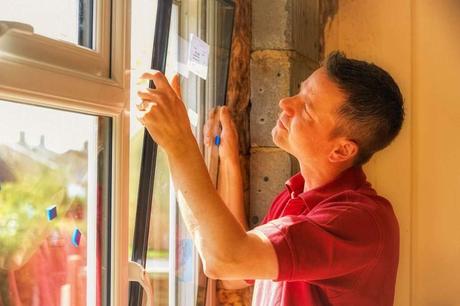
Windows are a source of air and heat leakage in homes, so they often cause homeowners to have higher utility bills. Fortunately, window manufacturers now make energy-efficient windows. These windows are more airtight and have special glazes or coatings that control window condensation, reduce heat loss in winter, keep the heat and UV rays out in the summer, and even reduce noise.
Energy Efficient Windows and Savings
By installing energy efficient windows, homeowners can often reduce their utility bills by 15-30 percent and increase the value of their homes. In addition, the Internal Revenue Service allows a tax credit of 10 percent of the purchase price for installing energy efficient windows in a home in 2006 or 2007.
Energy Efficient Windows: Labels and Ratings
Manufacturers label their energy-efficient windows with a rating of “U-values” and “R-values” (low U-value or R-value ratings indicate the window will lose less heat than others). The window frame is part of the consideration of these ratings; aluminum frames, for instance, lose heat more quickly than wood frames and also can cause condensation. Energy-efficient windows also come with an Energy Star label, which indicates the window meets the energy criteria of the U.S. Department of Energy and U.S. Environmental Protection Agency.
Energy Efficient Window Performance Factors
When selecting energy-efficient windows, homeowners will also want to consider how much light they want to allow through the windows, as the glazing or coating choices will impact the transmission of light. Tinted and reflective glass are the results of coatings that reduce the amount of heat the window draws in during the summertime; they also reduce the amount of light that comes through the window. An option for reflecting around 50 percent of the summer heat away from the glass but allowing more light in is low-emissivity (low-E) glass.
The number of panes in the window also impact its energy efficiency performance. The least energy efficient windows, single-glazed units, permit the most daylight. Double- or multiple-pane windows have two (or more) layers of glass, with argon or krypton gas filing the space between the panes. Because the gas transfers less heat, the window is more energy efficient. The way the windows are installed or hung also impact energy efficiency.
Which Type of Window Is the Most Energy Efficient?
Fixed-pane windows (which cannot be opened) are the most airtight. Double-hung windows, allowing one to open the upper or lower portion, are not as energy efficient as single-hung windows. Horizontal sliding windows are the least energy efficient.
